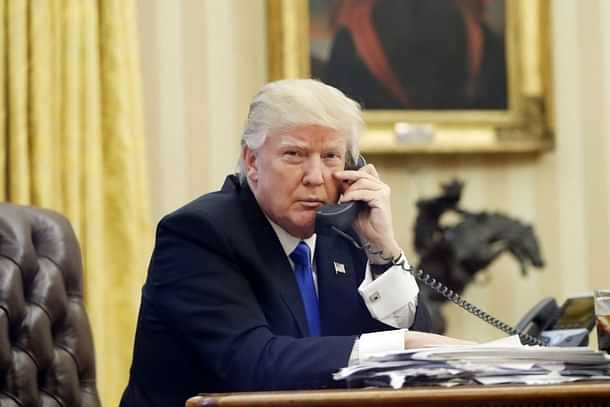Meta Description: On August 29, 2025, a U.S. court ruled Trump’s global tariffs, including 50% duties on India, illegal. Explore how this impacts India’s $66 billion export market and trade strategy.
Keywords: Trump tariffs, U.S. Court of Appeals, India trade policy, IEEPA, Supreme Court appeal, India exports, economic impact, U.S.-India trade
Author: BharatTone
Published: August 30, 2025
In a seismic shift for global trade, the U.S. Court of Appeals for the Federal Circuit delivered a stunning blow to President Donald Trump’s aggressive tariff regime on August 29, 2025, declaring most of his global tariffs, including steep 50% duties on India, illegal under the International Emergency Economic Powers Act (IEEPA). This landmark 7-4 ruling, which cites executive overreach, has sparked hope in New Delhi and raised critical questions about India’s $66 billion export market to the U.S. With Trump vowing to escalate the fight to the Supreme Court, what does this mean for India’s trade strategy, economy, and diplomatic relations with the United States? BharatTone dives into the details.
Trump’s Tariff Onslaught on India
Since taking office in January 2025, President Trump has made tariffs the centerpiece of his “America First” trade policy, targeting India as the “tariff king” and a “big abuser” of trade ties. On April 2, 2025, dubbed “Liberation Day,” Trump imposed a 10% baseline tariff on nearly all U.S. imports, with “reciprocal” tariffs soaring to 50% on Indian goods, effective August 27, 2025. These levies, justified under the IEEPA by citing trade deficits and national security concerns, hit 87% of India’s $66 billion exports to the U.S., particularly in pharmaceuticals, automotive, pearls, mineral fuels, and machinery. A Jefferies report even suggested Trump’s tariffs were partly driven by “personal pique” over India’s refusal to let him mediate in the India-Pakistan conflict in May 2025.
The tariffs stung India’s economy, with internal analyses estimating a 6–10% cost increase on key exports. Indian negotiators, led by Prime Minister Narendra Modi during a February 2025 White House visit, scrambled to mitigate the damage, offering tariff cuts on motorcycles and whiskey and pledging increased U.S. energy and defense imports to double bilateral trade to $500 billion by 2030. But the Federal Circuit’s ruling has thrown a lifeline to India, potentially reshaping its trade strategy.
The Legal Victory: A Blow to Trump’s Playbook
The Federal Circuit’s decision in V.O.S. Selections, Inc. v. United States affirmed a May 2025 ruling by the U.S. Court of International Trade (CIT), which struck down Trump’s IEEPA-based tariffs as unlawful. The court, in a 7-4 split, argued that the IEEPA, a 1977 law designed for sanctions and asset freezes, does not grant the president authority to impose sweeping tariffs. “The core Congressional power to impose taxes such as tariffs is vested exclusively in the legislative branch,” the court declared, emphasizing that the IEEPA lacks explicit tariff authorization. The ruling voids the 50% “reciprocal” tariffs on India and others, as well as “trafficking” tariffs on China, Canada, and Mexico, while sparing Section 232 tariffs on steel and aluminum.
The decision stemmed from lawsuits by small businesses and 12 Democratic-led U.S. states, who argued that trade deficits and drug trafficking—Trump’s cited “emergencies”—did not justify such broad measures. The court agreed, noting that tariffs must directly address the declared emergency, not merely create economic pressure. For India, this is a critical win, as the 50% tariffs threatened significant economic harm, particularly to its pharmaceutical and automotive sectors.
India’s Economic Reprieve: Opportunities and Challenges
The ruling offers immediate relief for Indian exporters. The invalidated tariffs could reduce costs for key sectors, potentially lowering prices for U.S. consumers and boosting India’s competitiveness. Economists estimate that Trump’s tariffs added an average $1,300 tax burden per U.S. household in 2025, with India’s exports bearing a heavy load. If the tariffs are permanently struck down, India’s $66 billion export market could stabilize, preserving jobs and supply chains in cities like Mumbai, Bengaluru, and Chennai.
However, uncertainty looms. The court delayed enforcement until October 14, 2025, giving Trump time to appeal to the Supreme Court, where his three appointees could sway the outcome. Trump’s team is already exploring alternative legal tools, such as Section 122 of the Trade Act of 1974 (allowing 15% tariffs for 150 days) or Section 301, used in his first-term China trade war. Trade adviser Peter Navarro hinted at a “Plan B,” stating, “You can assume, even if we lose, we will do it another way.” This suggests India must brace for potential new tariffs, even if the IEEPA route is blocked.
Diplomatic and Strategic Implications
The ruling weakens Trump’s leverage in trade negotiations, a tool he wielded to extract concessions from India and others. Deals with the EU, Japan, and Britain, secured under tariff threats, may now face scrutiny, and India could gain breathing room to renegotiate terms. Ajay Srivastava, a former Indian Commerce Ministry official, cautioned, “These tariffs may or may not be there, but agreements are forever. How can we give concessions on something that may not last?” India’s offer to increase U.S. imports and review tariffs may now be recalibrated, strengthening its position in talks aiming for $500 billion in bilateral trade by 2030.
Yet, economist Ajit Ranade warns against complacency. “The legal process may take a long time, and by then much of the economic impact will already be felt,” he told India Today. “India must raise productivity, improve cost efficiency, and make it easier to do business across sectors.” Strengthening domestic industries and diversifying export markets, such as to Southeast Asia or Europe, could shield India from future U.S. trade volatility.
Global Context: India in the Trade War
The ruling also casts doubt on Trump’s broader trade war, which escalated tensions with China (145% tariffs), Canada, and Mexico. For India, the decision aligns with global sentiment, with leaders like Hong Kong’s Paul Chan and Australia’s Don Farrell welcoming the curb on U.S. protectionism. However, countries like South Korea and Taiwan remain vulnerable to ongoing U.S. tariffs under other laws, highlighting the uneven impact of Trump’s policies. India’s strategic pivot—balancing trade with the U.S. while maintaining ties with Russia and others—will be crucial in navigating this uncertain landscape.
What’s Next for India?
As the case heads to the Supreme Court, India











